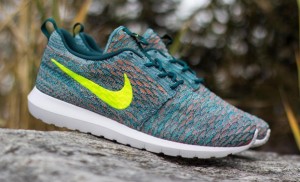According to Natural Marketing Institute’s shades of green, I would most probably fall under the “conventionals” category describing myself as someone who is aware and for the environment but does not always uphold sustainability because of laziness and costs, which play into my lifestyle choices and purchasing power. Personally speaking, with this mentality I am only most likely to purchase sustainable products if the masses start adopting and purchasing these new green products as trendsetters. In parallel but on the supply side of the story, the same chain effect is happening with companies in the consumer goods and services market.
Companies are responding to consumers’ behaviour shift like a trend. Conglomerates like Levi Strauss, Nike and J&J amongst many of the big players out there are adapting to the new market of green products and adopting this new emphasis on green products. Levi’s claims that its jeans are made from just about eight recycled plastic bottles and Nike claims that its knitted sneakers cut manufacturing waste by 88 percent. As evidenced by a survey conducted by brand consultancy BBMG in 2013, “more than a third of global consumers, including 40 percent of millennials, view style, status and environmentalism as intertwined”. To these consumers, sustainability has changed from being “the right thing to do” to being “the cool thing to do”, shifting the emphasis of valuing the need to do it to the want to do it. Based on this new change in perspective, for companies it is really not about offering a niche green product but rather offering a green band through building sustainability into the bloodline of the company in every single process no matter how big or small.
Companies are slowly but gradually shifting their segmentation, targeting and positioning from offering products that fall under the “feel-good factor/transient” quadrant that encompasses altruism and an external locus of control to the “value parity/green differentiation” quadrant that encompasses economic motives and an internal locus of control. Offering green products to the market is not enough to gain a competitive edge over competitors anymore, the new era of consumer preferences are now demanding companies as a whole to become green and this in fact is the new way to gain a competitive edge over competitors.
http://www.adweek.com/news/advertising-branding/green-new-black-levi-s-nike-among-marketers-pushing-sustainability-153318


